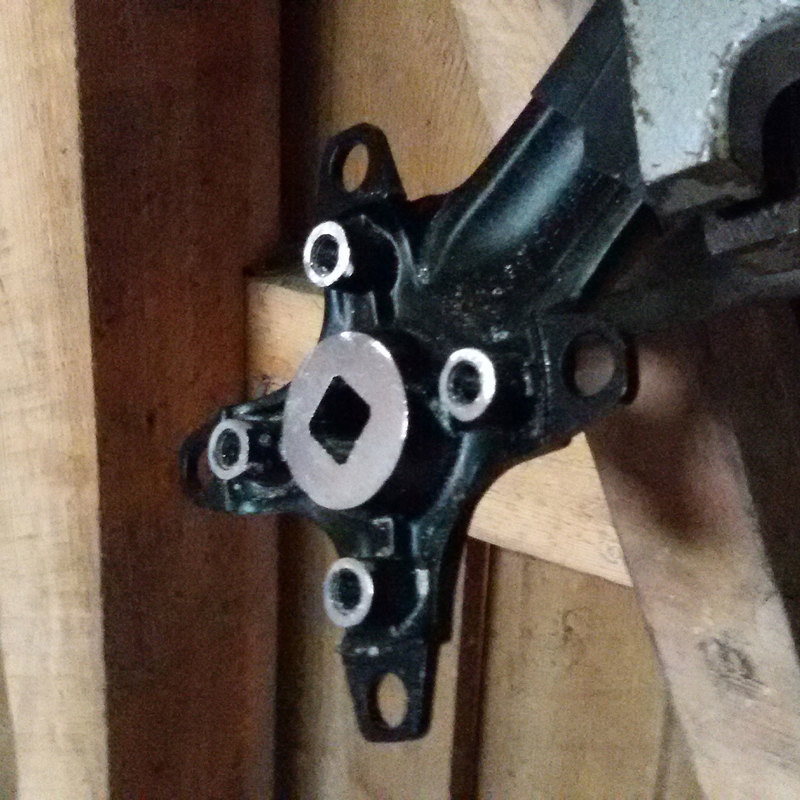How to measure bicycle q-factor



You can measure Q-factor without removing the cranks and bottom bracket. First, use some ruler or slide calipers as shown on the picture to get the distance between outer edge of the valve and outer edge of the left crank.

Then make the same measurement on the right side, and make the calculation: left distance + right distance - valve diameter. I have an auto valve (shraeder) 7mm diameter. So my calculation is 83 + 83 - 7 = 159mm. Not bad for the MTB crankset.

Narrow crank arms ( smaller Q-factor ) provide 5% more power and save your knees in the long run. The opposite - wide Q-factor (more than 190mm) just feels uncomfortable, especially if you're narrow-assed.

If your bike is MTB, hybrid or touring - the fast and easy way is to change the crankset to some road double or triple. Got road bike? Need to change the bottom-bracket to some shorter-spindle model.

My story is way more complex. I just wanted another chainring sizes, and bought the common MTB crankset at the local bike shop. It took me hours to remove the old cranks, it was a man-vs-metal fight. When the official crank-removal tool was broken, I just used the saw to get rid of the old crank arm.

It turned out with the new crankset the Q-factor increased from ~186mm to more than 190. For the ultra-narrow ass guy that I am it feels like riding the elephant. One more exhausting man-vs-metal round, and the old stained bottom-bracket was changed to brand new shiny FSA aluminum alloy gear. 126mm to 103mm - 23mm difference. Oh yeah ).

167mm q-factor I’ve got after the bottom bracket change is pretty normal for the hybrid bike, but I wasn't going to settle. I machined the crankset to rip off 4mm from each crank arm.

Then I’ve machined the edge of the bottom bracket - just 1mm. Almost there, just need to cease this gap. Keeping the chain line is not a problem cause I got rid of the 22-tooth first chainring and 32-tooth chainring is now the first.































